Track
Nowadays, developers are expected to build scalable, secure, and highly available applications. Amazon Web Services (AWS), the world’s leading cloud computing platform, enables developers to achieve this without managing physical servers or complex infrastructure.
In this article, we’ll explain why developers should use AWS and provide a list of the top AWS services that can enhance productivity, streamline development, and drive innovation.
If you’re still learning about AWS, check out our guide, How to Learn AWS From Scratch in 2025.
What is Amazon Web Services?
Amazon Web Services (AWS) is the world’s most widely adopted cloud computing platform offered by Amazon. As we explore in our AWS Concepts course, it stands out for its vast range of services, such as computing power, storage, databases, machine learning, and security.
AWS operates on a pay-as-you-go model, giving businesses access to enterprise-grade infrastructure without traditional IT costs. With a global data center network, developers can deploy applications from anywhere.
Why Developers Should Leverage AWS
There are several reasons why developers should consider starting their journey with AWS.
One of the biggest advantages is scalability and the ability to handle increasing demand. For instance, if you are building a portfolio website with only a handful of visitors, mainly yourself and a few potential employers, scalability isn’t a major concern.
However, if you’re launching an online clothing store, you’ll likely attract a much larger number of customers. In this case, relying on a single server could lead to crashes during traffic spikes. With AWS, you can automatically scale your infrastructure to accommodate fluctuations in demand, ensuring a smooth user experience, all with just a few clicks.
Beyond scalability, security is another crucial benefit. In an era where cyber threats are widespread, protecting user data is essential. AWS offers robust security features to help safeguard your applications from malicious attacks.
Additionally, AWS excels in performance and reliability, ensuring that your applications run efficiently with minimal downtime. It also streamlines deployment automation, reducing manual effort and allowing developers to focus more on innovation than tedious operational tasks.
By leveraging AWS, developers gain access to a powerful, flexible, and secure cloud platform that can support their projects at any scale. What’s more, AWS certifications, such as the CLF-C02 Cloud Practitioner, can increase your job prospects across a range of industries.
Top AWS Services for Developers
Now that we’ve explored why AWS is valuable for developers, let’s take a closer look at some of its most essential services and how they can enhance development workflows.
Amazon EC2
Amazon EC2 (Elastic Compute Cloud) is a core AWS service that provides scalable computing power in the cloud. It enables the ability to rent virtual servers, known as EC2 instances, on demand, eliminating the need for costly physical infrastructure. With EC2, you can scale applications using Auto Scaling Groups, optimize resource distribution with Elastic Load Balancing and tailor instances to specific workloads.
Benefits
There are several reasons why you should use this AWS service. One of the main reasons is that it provides scalability and flexibility. Indeed, it easily scales resources up or down based on demand. It’s also cost-efficient, you just pay for what you use, and allows you to choose different istance types based on needs.
Types of EC2 Instances
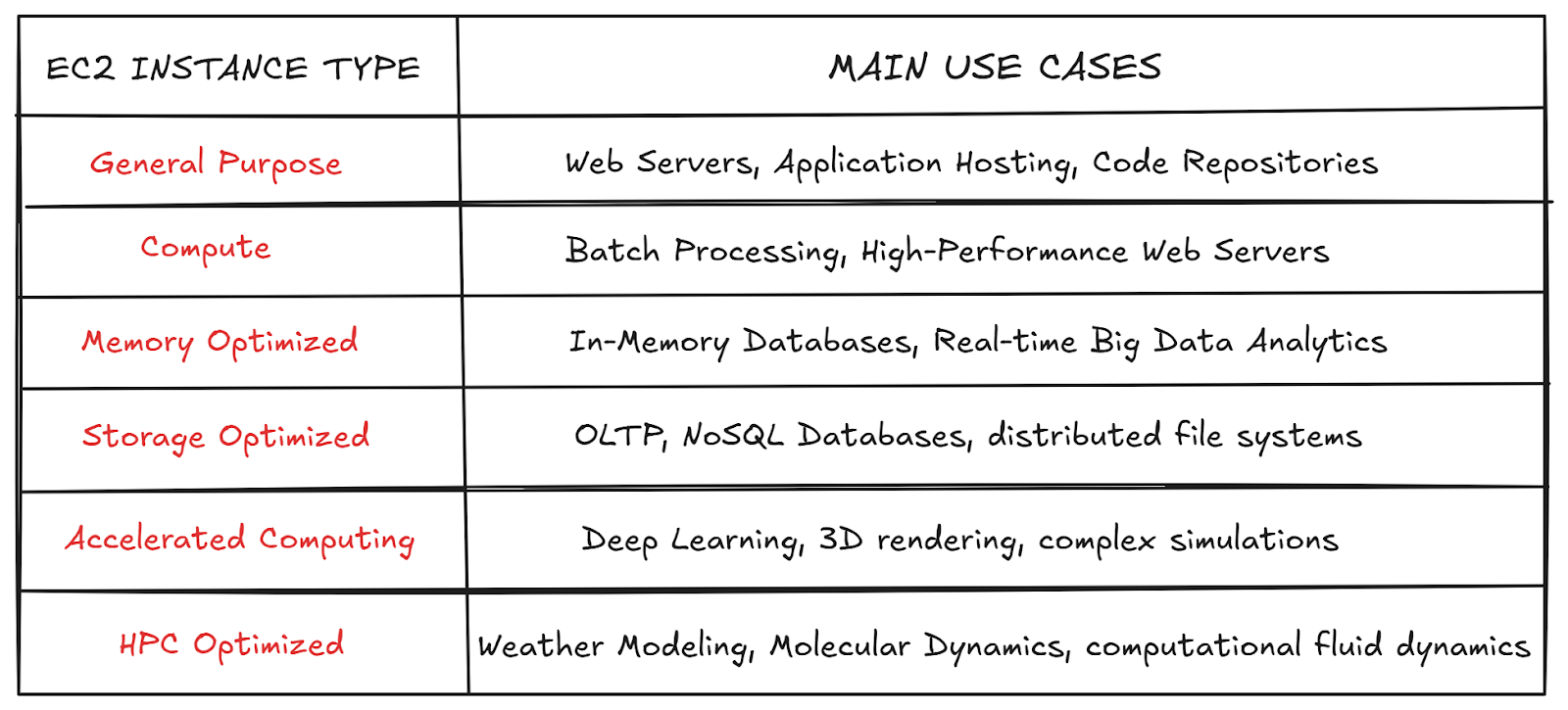
Amazon EC2 offers various instance types optimized for different computing needs:
- General purpose: Balanced compute, memory, and networking for versatile workloads such as web servers, application hosting, and code repositories.
- Compute optimized: Ideal for CPU-intensive tasks, including batch processing, high-performance web servers, media transcoding, and machine learning inference.
- Memory optimized: Designed for applications that process large datasets in memory, such as in-memory databases, high-performance caching, and real-time big data analytics.
- Storage optimized: Best suited for workloads requiring high-speed local storage access, including high-frequency transaction processing (OLTP), NoSQL databases, and distributed file systems.
- Accelerated computing: Powered by GPUs for high-performance computing tasks such as deep learning, 3D rendering, and complex simulations.
- HPC optimized: Tailored for high-performance computing (HPC) workloads, including weather modeling, molecular dynamics, and computational fluid dynamics.
By selecting the right EC2 instance type, businesses can optimize performance, cost, and efficiency for their specific applications.
AWS Lambda
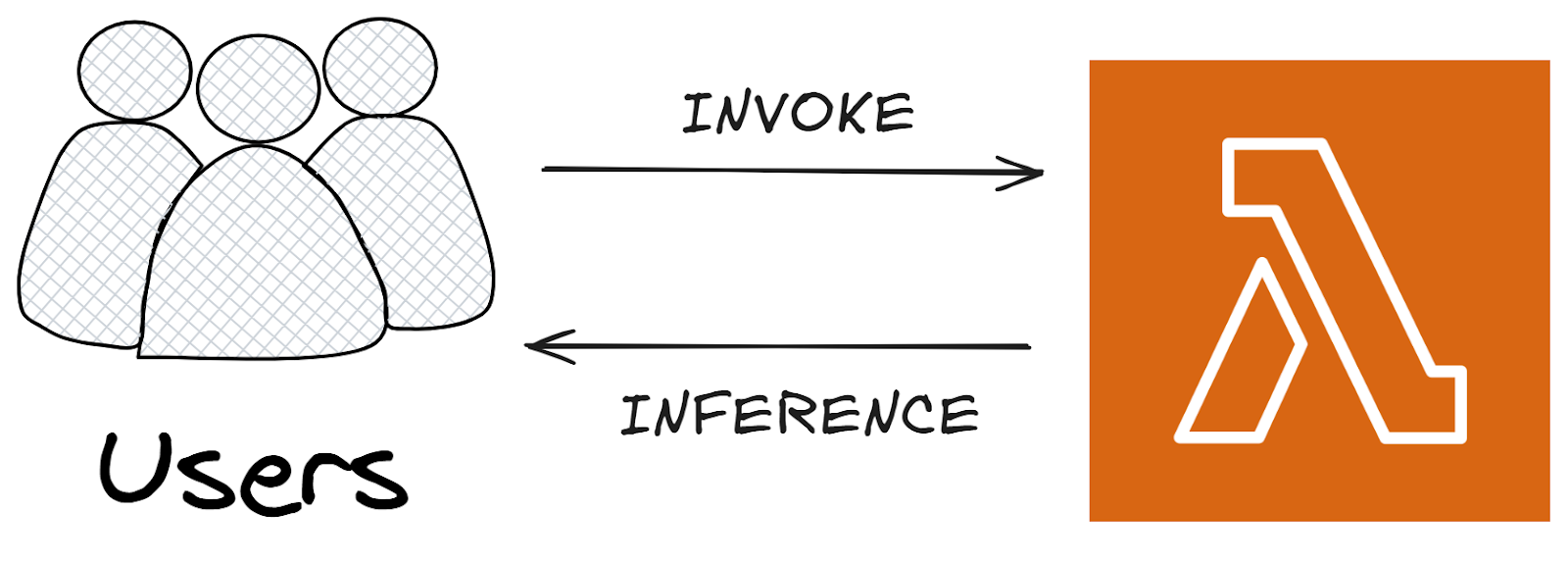
AWS Lambda is a serverless compute service that lets you run code without provisioning or managing servers.
Benefits
Using AWS Lambda can have a good impact on the work of developers for several reasons. First of all, there are no servers to manage, and the scaling is automated based on incoming requests. This makes it highly cost-effective for short-lived executions. With AWS Lambda, you can focus on writing code while AWS handles the underlying infrastructure, scaling, and availability.
Common use cases
AWS Lambda is ideal for a wide range of real-time, event-driven applications, including:
- Process logs, IoT data, and real-time analytics with minimal latency.
- Handle API requests efficiently for web and mobile applications.
- Automate ML model inference, data transformation, and predictions.
- Respond to changes in AWS services like S3 file uploads or database updates.
Amazon S3
Amazon Simple Storage Service (S3) is a highly scalable, secure, and durable object storage service that serves as the backbone for many applications, websites, and AWS services. It enables users to store and retrieve any amount of data from anywhere, making it an essential component of cloud-based architecture.
Amazon S3 organizes data into buckets, which act as top-level storage containers. Objects (files) stored within these buckets can be accessed securely and managed using fine-grained permissions. Each S3 bucket must have a globally unique name and be created within a specific AWS region.
Benefits
Amazon S3 has several advantages. First, it is highly scalable and durable, ensuring data remains safe and accessible. Moreover, it can be easily integrated with other AWS services and supports encryption, access control, and compliance standards for data protection. Like the previous AWS services, it is cost-efficient. Depending on access patterns and budgets, it offers multiple storage classes.
Amazon S3 storage classes
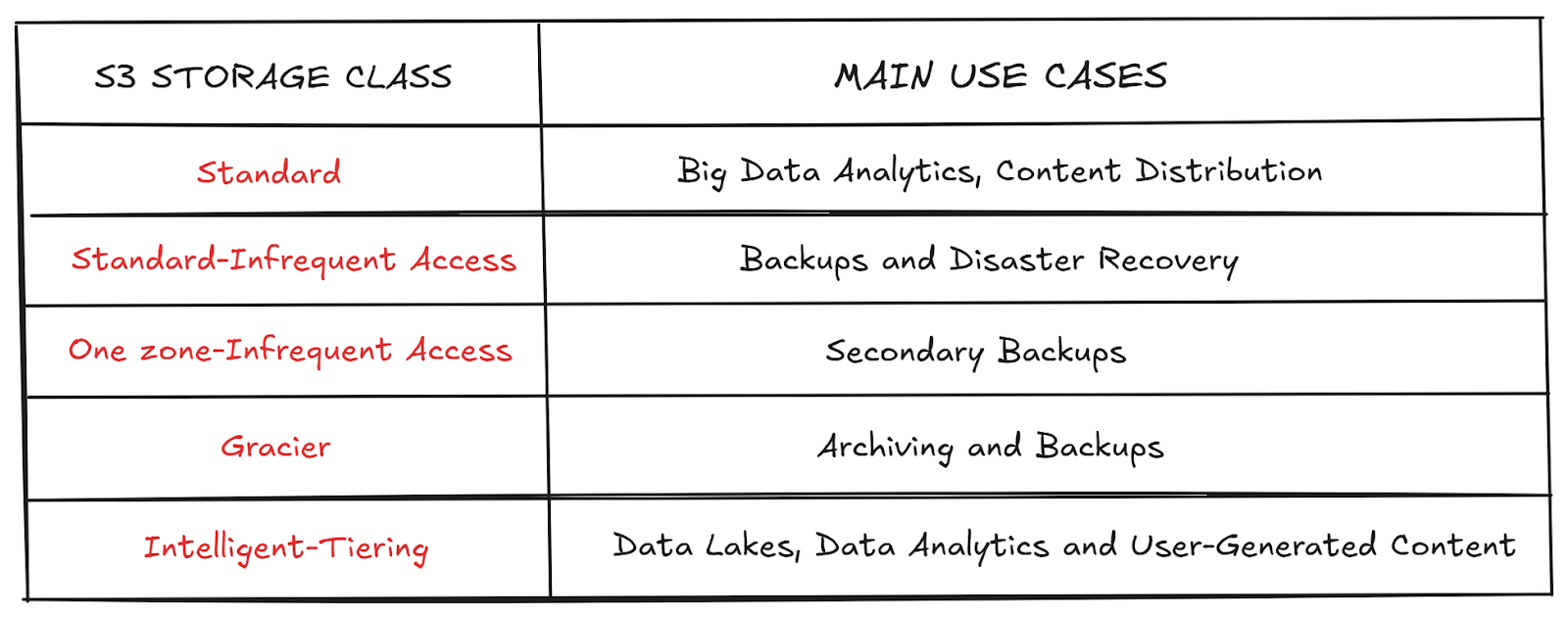
Amazon S3 offers different storage classes optimized for cost, performance, and access patterns:
- S3 Standard (General Purpose) is the best option for frequently accessed data with low latency and high throughput. Ideal for big data analytics, content distribution, and mobile applications.
- S3 Standard-Infrequent Access (S3 Standard-IA) is designed for data that is accessed less often but still requires fast retrieval. It’s suitable for backups and disaster recovery.
- S3 One Zone-Infrequent Access is similar to S3 Standard-IA but stores data in a single Availability Zone (AZ). Ideal for secondary backups or recreatable data.
- S3 Glacier is a low-cost storage for long-term archiving. It’s great for archiving and backups.
- S3 Intelligent-Tiering automatically moves data between different storage classes based on the usage. It’s suitable for datalakes, data analytics and user-generated content.
AWS IAM
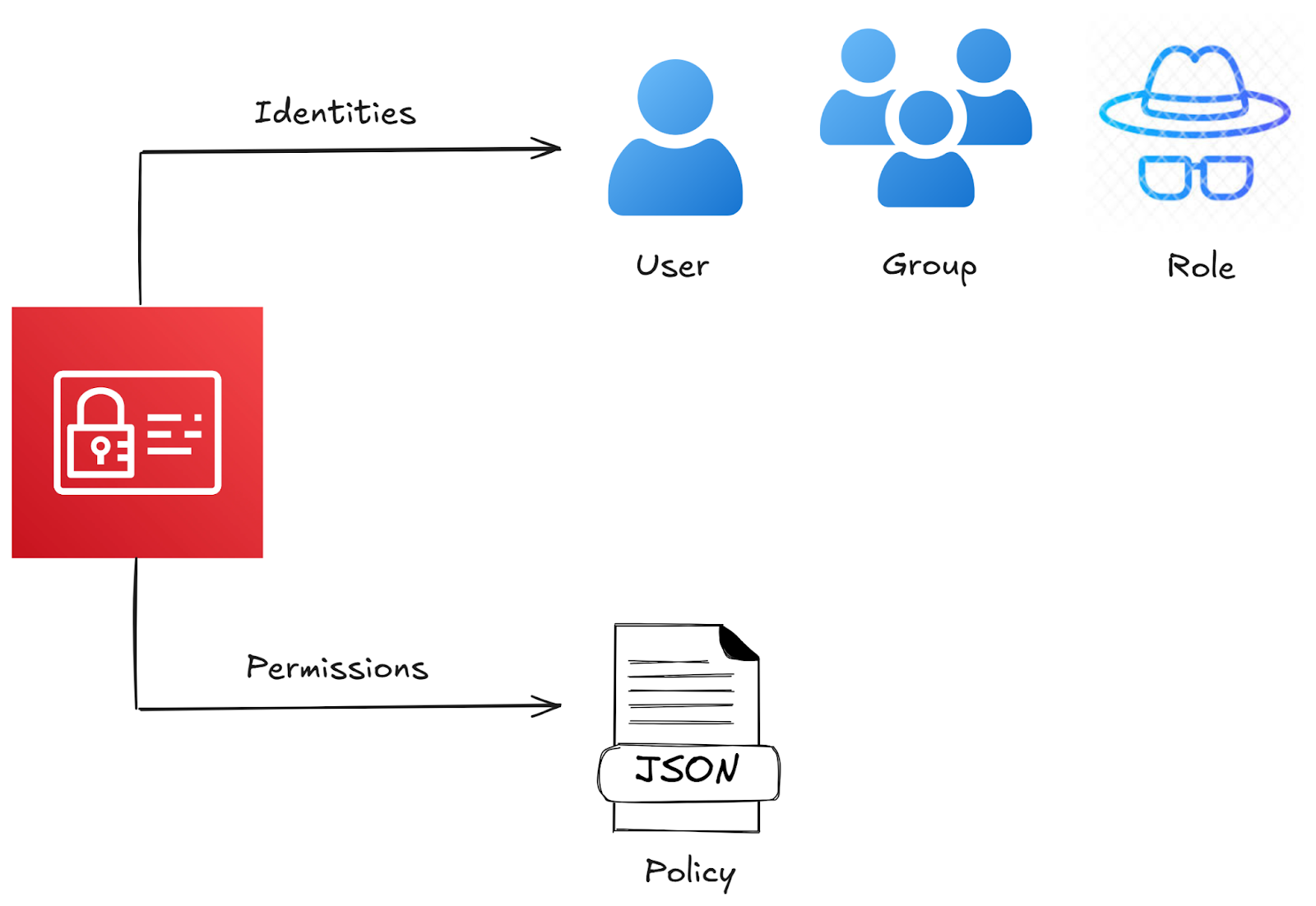
AWS Identity and Access Management (IAM) is a global AWS service that enables organizations to securely manage access to AWS resources. It allows administrators to create users, groups, and roles, assigning permissions to control who can access what within an AWS account. This security service enforces the principle of least privilege, ensuring that users and applications only have the necessary permissions to perform their tasks.
Benefits
First, AWS IAM permits to define fine-grained permissions for users, groups, and roles. Moreover, it tracks access activity and analyzes permissions with built-in security tools. In particular, it enhances security by requiring multiple authentication factors.
Key Components
- Root Account is the highly privileged account created when setting up AWS. Best practice is to avoid using it for daily operations.
- Users are people within your organization that interact with AWS. Users can belong to multiple groups or exist independently.
- Groups are collections of users that share the same permissions. Groups cannot contain other groups.
- Roles are temporary credentials assigned to AWS services or external identities, following least privilege access principles.
- Policies are JSON-based documents that define permissions, specifying what actions are allowed or denied.
AWS CodePipeline
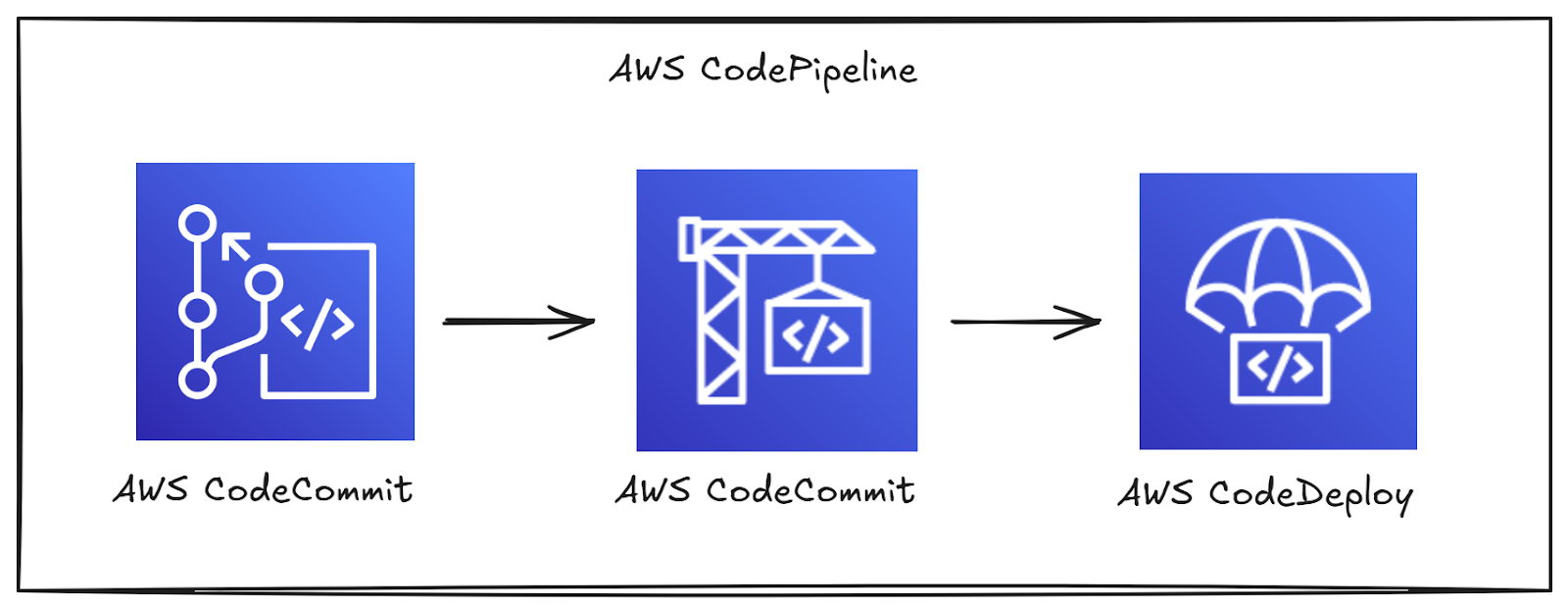
AWS CodePipeline is a fully managed continuous integration and continuous delivery (CI/CD) service that automates the build, test, and deployment process for applications. It enables developers to create automated pipelines that accelerate software delivery, ensuring rapid updates and improved deployment reliability.
With CodePipeline, users can define a sequence of steps to take their code from source control to production, integrating with AWS services like CodeCommit, CodeBuild, CodeDeploy, Elastic Beanstalk, and third-party tools.
Benefits
There are several use cases where CodePipeline can be used:
- Automates software deployment by defining a structured pipeline to push code changes to production
- Ensures fast and reliable updates with automated workflows.
- Track pipeline execution and trigger responses to failures.
- Restrict access to deployment pipelines using IAM roles and policies.
- Extend pipelines by integrating with third-party tools and custom scripts.
AWS Services Comparison Table
In the table below, we’ve compared the AWS services for developers mentioned throughout the article so you can quickly compare and contrast them:
|
AWS Service |
Description |
Key Benefits |
Common Use Cases |
|
Amazon EC2 |
Scalable virtual servers in the cloud with various instance types. |
Scalability, cost efficiency, multiple instance types for different workloads. |
Web hosting, application hosting, batch processing, HPC, AI/ML workloads. |
|
AWS Lambda |
Serverless compute service for running code without managing servers. |
No server management, automatic scaling, cost-effective for short executions. |
Real-time event processing, API backends, data transformation, automation. |
|
Amazon S3 |
Highly scalable and durable object storage service. |
Highly scalable, durable, integrates with other AWS services, multiple storage classes. |
Backup storage, content delivery, data lakes, long-term archiving. |
|
AWS IAM |
Securely manage access to AWS resources with roles, users, and policies. |
Fine-grained access control, multi-factor authentication, security monitoring. |
User authentication, access control, security enforcement. |
|
AWS CodePipeline |
Managed CI/CD service for automating software deployments. |
Automates deployment, ensures fast updates, integrates with third-party tools. |
Automating build/test/deployment pipelines, software delivery optimization. |
Conclusion
This article has explored key AWS services that can significantly impact a developer’s workflow. Before diving into specific AWS features, it’s essential to consider why you are using this platform and how it can benefit your business or project. Understanding its value will help you make the most of its powerful capabilities.
If you are interested in getting started with AWS, DataCamp offers a course covering the fundamental AWS concepts. For those looking to deepen their knowledge, the AWS Cloud Practitioner Track can give you good preparation, whether you aim to master AWS fundamentals or prepare for the AWS Certified Cloud Practitioner Exam.
